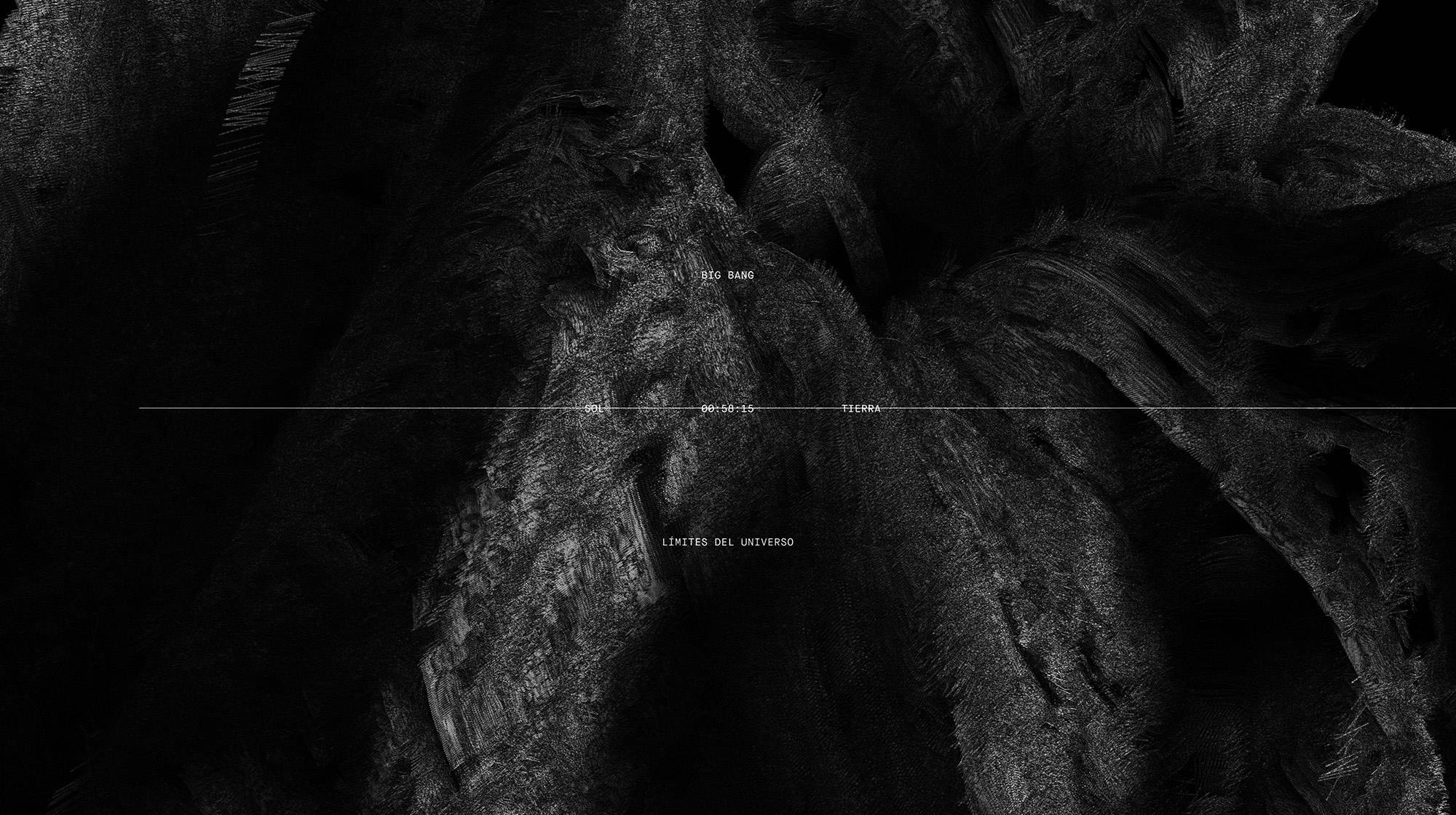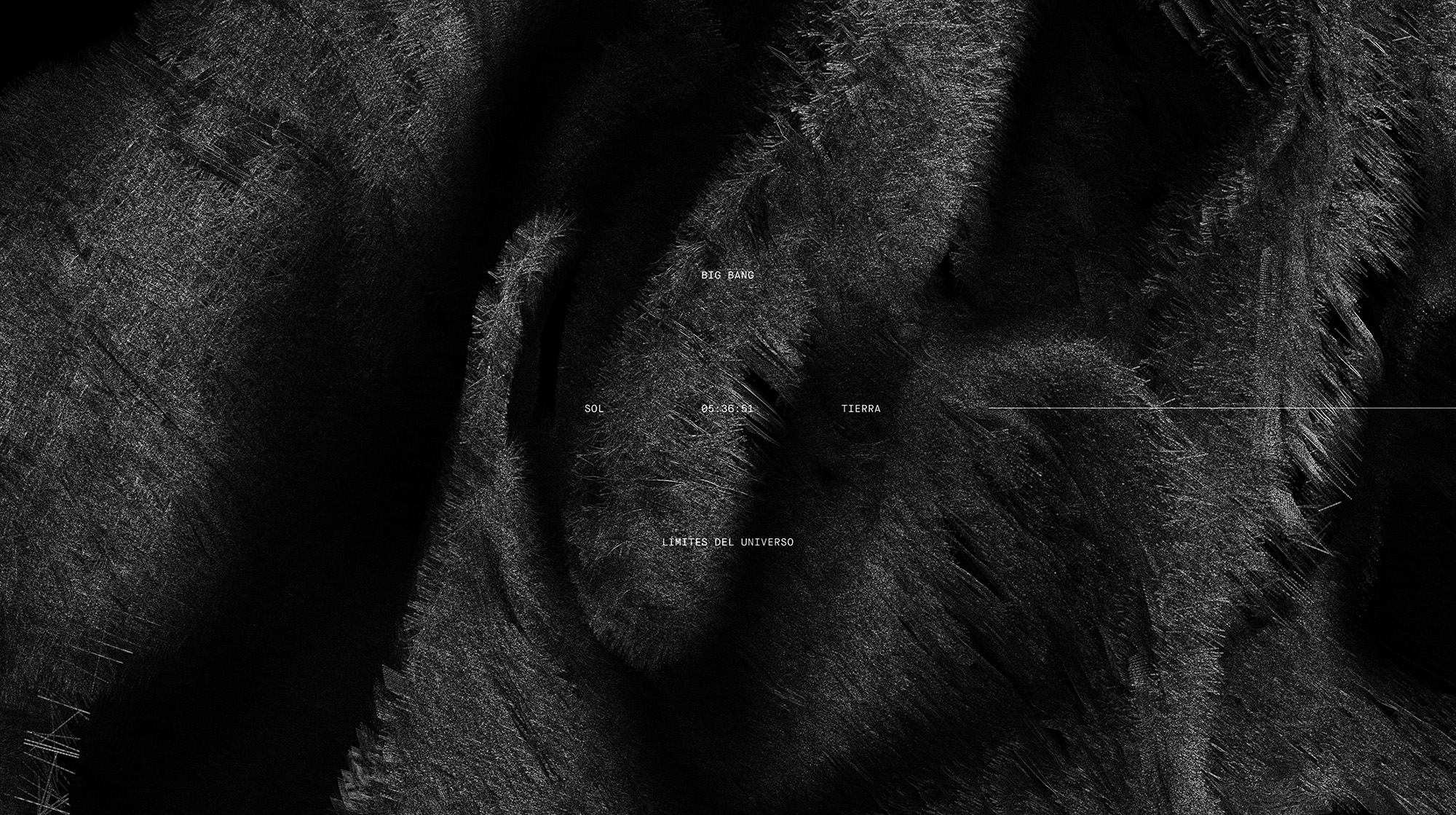Stardust
generative installation
“Dust of Stars” is a generative artwork that explores cosmological rhythms and scales. In the physical world, noise manifests itself from the cosmic microwave background that refers to the Big Bang itself, to the quantum fluctuations of space-time. In generative computing, different types of noise (Gaussian, Perlin, etc.) function as a source for the generation of content and behaviors. The work explores the analogy between physical and digital noise, generating images that recall solar explosions, tides, typhoons, cells, corals, the internal structure of bones, and the entire universe of possibilities that tangentialize this imaginary.
The work operates in 8-minute loops, the average tempo that a ray of sunlight takes to hit the earth, displayed in a line that runs the width of the screen. Due to the generative nature of the algorithm, each instance is unique and unrepeatable.
You can also see printed on the screen a kind of world map that places our solar system in relation to the Big Bang and the limits of what is known, emulating the scientific maps that seek to represent these phenomena.
The phrase "we are stardust" was popularized by Carl Sagan based on the discovery that the Big Bang generated only hydrogen and helium, and that the essential elements for life were formed within the first stars, spreading only through the cosmos. after their explosion. Thus, beyond all the conceptual, technical and technological strategy, the work mainly seeks to remind us that we are nature.
TECH RIDER
- 7000 ansi proyector, (4k compatible)
- M1 MacBook Pro, 32gb video / with Touch Designer
- Focusrite Scarlett 4i4 audio interface
- 2 Genelec 8040b monitors or similar + sub woofer
Password: Stardust



